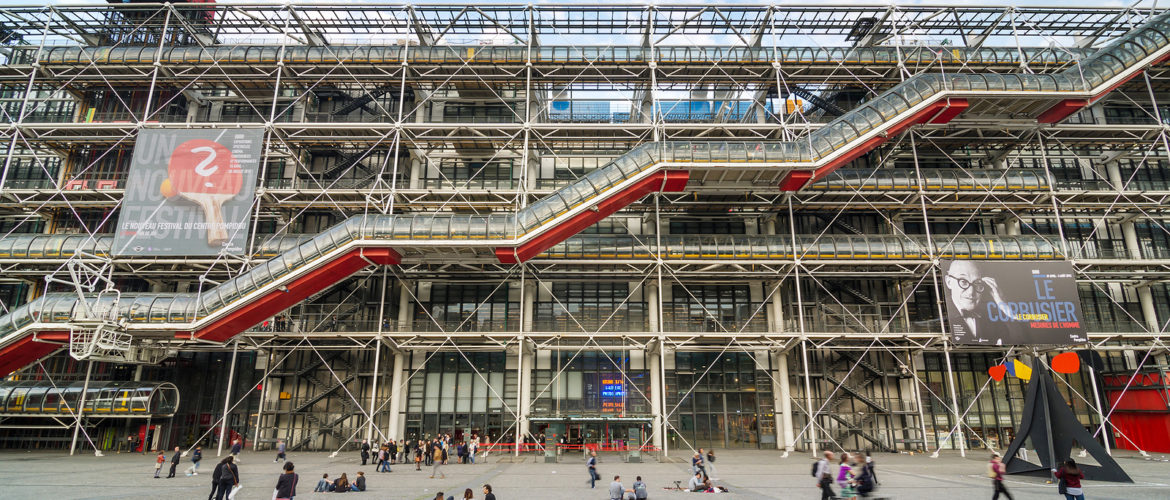From Controversy to Iconic Status: The Story of the Pompidou Museum

The Pompidou Museum, widely known as the Centre Pompidou, is an iconic art hub in Paris, with one of the world’s largest collections (over 120,000 works). The institution owns exclusive masterpieces by Henri Matisse, Jackson Pollock, and Frida Kahlo, among others, with a wide range of modern and contemporary art available for viewing at its permanent exhibitions. However, the museum went through a long journey to recognition, with much controversy surrounding its design since its opening.
Controversial Beginning of the Pompidou Museum
The Centre Pompidou became notorious as a polarizing architectural experiment upon its launch in 1977. Its design was initially planned to be revolutionary and non-traditional, with over 600 contenders competing for the project. A team of young architects, including Renzo Piano, Richard Rogers, and Gianfranco Franchini, won the tender for the museum’s design and proposed an “inside-out” concept of its exterior.
The museum’s radical design solutions, from colorful pipes embellishing its façade to transparent glass walls, caused a lot of controversy among critics. The conservative Parisian public criticized the building for its monstrosity and denied its place amid the elegance of classical French boulevards.
Despite the initial negative reaction among the local community, the museum quickly attracted crowds of visitors, with over 5 million attendees recorded within its first year in existence. The opening exhibition featured a one-of-a-kind collection of masterpieces, including works by Marcel Duchamp and Pablo Picasso. This event set the ambitious tone of the museum’s mission and marked a huge step in increasing art accessibility.
A Game-Changer in Museum Design
The Centre Pompidou produced a lasting impact on modern museum design. Its flexible, open-plan interior and the inside-out, transparent exterior challenged the traditional vision of museum buildings as fortress-like spaces for elites. The building’s exposed infrastructure invited visitors to explore it as a living entity, inspiring many other ambitious museum projects like the Guggenheim Museum Bilbao and Tate Modern. All in all, the Center Pompidou established a new tradition of flexibility and transparency in museums, with modular interior elements and movable walls giving exhibition curators unprecedented freedom of experimentation.
The Centre Pompidou as an Iconic Art Hub
At present, the Pompidou Museum occupies a significant place in the global art arena, with its vast collection of modern and contemporary art spanning many styles, epochs, and approaches. The museum is also responsible for discovering many emerging talents, including Gustav Klimt and Egon Schiele. At present, the entity is undergoing a major renovation, with the international art connoisseur community awaiting its re-opening with new, exciting design elements and solutions.
